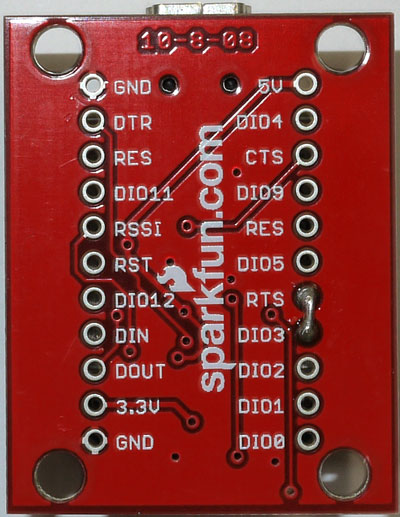The XBee is configured as an 'end-device' and periodically transmits three analog samples to its 'coordinator': humidity on AD0, temperature on AD1 and supply voltage on AD2.
The most important design decision was to run the XBee standalone, without the aid of a microcontroller, which had several consequences for the resulting circuit:
- It constrained the choice of humidity sensor to the relatively-expensive Honeywell part, which outputs a voltage proportional to temperature. (Cheaper parts, such as this one, output digital data requiring a microcontroller to present it to the XBee.)
- The Honeywell part demands a 5v supply, and the XBee no more than 3.3v, entailing the further purchase of an Explorer Regulated to step-down the supply voltage for the XBee. (This is not shown in the diagram.)
- The analog inputs on the XBee can only read up to 1.2v, so each sensor's output must be passed through a resistive divider to scale it down.
- To conserve power, the XBee spends most of its time asleep, waking only to read the sensors. Its ON/SLEEP pin is asserted when it wakes but, of course, doesn't supply the correct voltage for the sensors, so a transistor is needed to switch the 5v supply.
(The diagram was made with Eagle for which Sparkfun provides a library of circuit elements for most of the parts it supplies.)
The software side of this project will be described in a subsequent posting.












